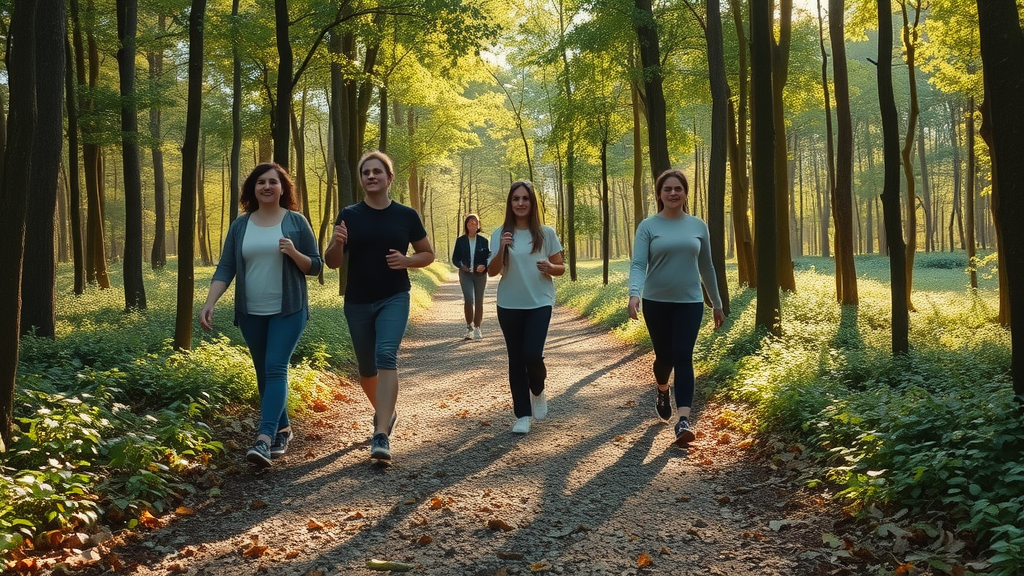Did you know that forest bathing can decrease the stress hormone cortisol by an astonishing 32% after just one session? In our hyperconnected world, more people are turning to forest bathing practices as a natural, science-backed way to restore calm, enhance mental health, and rediscover the healing power of nature. This complete guide unveils the origins, foundations, evidence, and practical steps to start your own forest bathing journey today.

Unveiling Surprising Insights: Why Forest Bathing Practices are Powerful for Stress Relief
Forest bathing practices are more than a fleeting wellness trend—they are a science-backed antidote to the stresses of modern life. Grounded in the time-honored Japanese practice of shinrin yoku , this immersive activity encourages people to spend time in natural environments, specifically forests, to experience profound relief from anxiety, overwhelm, and burnout. Unlike simply visiting an urban park, forest bathing emphasizes slow, mindful movement and deliberate sensory connection with the natural world.
Emerging research emphasizes the powerful benefits of forest bathing practices, including significant reductions in cortisol (the “stress hormone”), improved focus, and a greater sense of calm. Many find that even a single session in a forest environment can reset mental equilibrium, uplift mood, and enhance overall well-being. As urbanization increases, the need for nature-based stress reduction tools like forest bathing becomes more critical—not just for individual mental health, but for communities as a whole.
Forest Bathing Practices and Modern Science: The Data Behind Stress Reduction
Scientific investigations into forest bathing practices—often conducted in Japan, the U.S., and Europe—highlight their measurable effects on both the body and mind. Shinrin yoku participants demonstrate reduced blood pressure, lower heart rates, heightened immune system activity, and a compassionate sense of interconnectedness with their surroundings. A leading theory suggests that organic compounds released by trees, such as phytoncides, directly lower stress and promote immune health.
Importantly, these benefits of forest bath extend far beyond ordinary relaxation activities. Controlled studies comparing forest baths with urban walks or indoor relaxation reveal striking differences in physiological and psychological markers of stress. As more practitioners, therapists, and doctors recognize its value, forest bathing is quickly becoming a staple in preventive health and stress management worldwide.
Recent studies reveal that forest bathing can reduce cortisol levels—the primary stress hormone—by up to 32% after just one session.
| Activity | Average Stress Reduction (%) | Average Session Time (min) |
|---|---|---|
| Forest Bathing | 32 | 60 |
| Yoga | 25 | 60 |
| Meditation | 20 | 30 |
| Walking in City Parks | 15 | 60 |
Understanding Forest Bathing Practices: Origins, Foundations, and Core Concepts
The origins of forest bathing practices trace back to Japan, where the government first coined the term “ shinrin yoku ” in the 1980s. This Japanese practice was designed to address rising cases of stress-related illness by prescribing more time in nature as a public health remedy. Over the last four decades, forest bathing has evolved into a global movement, inspiring practices like " rin yoku " and widespread adoption across Europe, North America, and beyond. At its heart, the practice seeks to reawaken the innate connection between humans and the natural world, lost through urbanization and digital life.
Forest bathing practices rely on several core foundations: mindful immersion (allowing senses to guide one’s awareness), a gentle, slow pace, and a non-judgmental attitude free from performance or pressure. By simply “being” in a forest—without goals or distractions—participants rediscover the refreshing clarity and mental health enhancements that arise from nature’s embrace. Increasingly, researchers recognize that spending time in green space isn’t just pleasant; it’s essential for balanced, healthy living.
What is Forest Bathing? The Japanese Practice of Shinrin Yoku Explained
Forest bathing (or “ shinrin yoku ”) means “taking in the forest atmosphere” or “forest bath.” But despite its name, there is no actual bathing in water. Rather, participants gently stroll or rest within the forest environment, letting go of distractions and deliberately tuning in to each of the five senses. This practice of forest bathing helps quiet mental chatter, lowers stress hormones, and provides a deeply grounding experience.
In the traditional Japanese practice , guides may gently instruct participants to pause, sit, or lay on mossy ground, to touch rough cedar bark, or to listen for the rustle of distant wildlife. The essence lies in immersing oneself fully —without a phone, without a to-do list—in the restorative energy of the woods. Shinrin yoku is not a race or a hike; it’s a slow-moving, deeply mindful activity.

The Essence of Forest Bath: Connecting with Nature for Stress Relief
At its core, the essence of forest bath lies in mindful engagement—reconnecting with nature using all senses. When you devote unhurried time to the forest environment, noticing everything from the texture of moss underfoot to the subtle interplay of wind and leaves, you enter a powerful space for healing and renewal. Studies show that the mere act of spending time in nature can “reset” the mind, reduce overthinking, and strengthen attention.
It’s not about hiking long distances or forcing meditation, but about non-judgmentally observing what’s around you. Whether in a towering grove or a small neighborhood green space, forest bathing enables you to experience nature’s rhythms—rainfall, birdsong, filtered sunlight—with heartfelt presence. Over time, these mindful forest bathing activities can help reduce symptoms of anxiety, stress, and even depression, making it one of the most accessible and effective stress relief tools available.
-
Key Principles of Forest Bathing Practices:
- Mindful immersion in forest settings
- Sensory engagement (sight, sound, touch, smell)
- Slow pace and intentional presence
- Non-judgmental observation
Step-by-Step Forest Bathing Guide: Essential Practices to Relieve Stress
Unlocking the benefits of forest bathing is as much about preparation as it is about participation. This forest bathing guide will help you set the stage for a profound, rejuvenating experience. Whether under the guidance of a professional or embarking solo, it’s essential to approach each forest bathe with openness and intention.
Start by preparing your mindset: let go of expectations, time commitments, and digital distractions. Once present in a forest or green space, explore the practice of forest bathing by systematically engaging each sense—sight, smell, touch, sound, and taste (when safe). Moving slowly and mindfully, you’ll notice the positive impact on your mood and vitality. Thoughtful technique ensures a richer, more lasting relaxation effect, ultimately leading to reduced stress and greater mental clarity.
Preparing for a Forest Bathe: Setting Your Intention and Mindset
Before your first forest bath, pause to set a gentle intention. This step helps orient your attention and prepares the mind for a transformative experience. Perhaps your intention is simple—connect with nature, slow down, or observe beauty. Leave behind digital devices and the pressure to “do” anything. Instead, remind yourself that your only task is to simply be present .
Choosing a comfortable outfit, appropriate for the weather and forest environment, maximizes comfort and frees you from distraction. Carry water, a hat, or rain gear as needed, and opt for trails where you feel safe. By approaching the practice of forest bathing with openness and curiosity, even a brief time immersed in nature can lead to immediate and noticeable stress reduction.
Forest Bathing Techniques: How to Engage the Senses
Engaging all five senses is central to forest bathing practices. Begin with slow, deliberate breathing and mindful walking—notice how the earth feels beneath your feet. Reach out and touch the rough bark of a tree or the softness of moss; examine intricate leaf patterns or the dance of sunlight through the canopy above. Inhale deeply to savor the subtle, earthy aromas—fresh air filled with the scent of pine needles, damp soil, or wildflowers.
Pause frequently to listen for the forest’s soundscape : birds calling, leaves rustling, distant water flowing. As you deepen your sensory awareness, allow thoughts and concerns to pass without judgment. This is not the time to problem-solve but to immerse yourself gently in the rhythms of the natural environment. Over time, these immersive bathing activities foster a sense of oneness, peace, and deep relaxation.
-
Forest Bathing Techniques:
- Deep breathing and slow walking
- Touching trees and leaves
- Observing patterns in nature
- Listening to ambient forest sounds
- Noticing scents and forest aromas

Guided Forest Bathing: The Role of Forest Therapy and Professional Guidance
While solo practice is powerful, guided forest bathing with a certified forest therapy guide can deepen your experience and unlock new dimensions of well-being. Forest therapy draws upon the principles of psychology, ecology, and mindfulness to support participants in stepping outside daily life and into a more receptive state. Trained guides structure sessions to maximize comfort, safety, and the restorative power of the forest environment.
Professional guidance can be especially helpful for beginners or for those seeking to address specific needs—such as recovery from burnout or emotional distress. A guide’s presence encourages intentional pacing, facilitates sensory invitations, and holds space for group or personal reflection. In this way, the guided forest bath becomes as much about connection and community as about individual renewal.
Forest Therapy Explained: How Trained Guides Enhance the Forest Bath Experience
A typical forest therapy session begins with gentle orientation and intention-setting, followed by a series of guided invitations to explore the forest environment. Certified guides leverage mindfulness techniques, ecological knowledge, and psychological insight to cultivate presence, curiosity, and connection.
Through mindful movement, quiet observation, and open sharing, participants report a deeper sense of belonging and clearer awareness of both inner and outer worlds. Trained guides help participants approach uncomfortable emotions or distractions without judgment, ultimately facilitating a more complete and rewarding forest bathing experience .
What to Expect During a Guided Forest Bathing Session
During a typical guided forest bathing session, participants gather in a safe, accessible wooded area. Sessions may last 60–120 minutes and unfold at a slow, unhurried pace. The guide presents “invitations”—suggested ways to explore the forest environment—such as finding a favorite tree, listening to the layers of sound, or exploring contrasting textures.
The session usually concludes with group or individual reflections. This space for sharing enhances the sense of community and deepens integration of the benefits of forest baths. Participants often describe a lingering feeling of calm, clarity, and gentle energy that persists long after leaving the woods.
The Health Benefits of Forest Bathing Practices for Mental Health and Well-being
What makes forest bathing practices so uniquely effective for well-being? Unlike conventional exercise or meditation, the act of immersing in green space addresses the entire mind-body system. Clinical research from Japan, Korea, and the West shows substantial reductions in anxiety, improvements in mood, and more robust immune system functioning for those engaged in regular forest bath practices.
Many participants also report greater ability to focus, reduced symptoms of depression, lower blood pressure, and a heightened sense of vitality. Dr. Qing Li, a global authority on forest therapy, emphasizes that “ spending time in forests doesn’t just rejuvenate your mind—it strengthens your immune system and sharpens cognitive function .” The cumulative positive impact of these forest bathing activities helps buffer daily stress and leads to long-term resilience.
"Spending time in forests doesn't just rejuvenate your mind—it strengthens your immune system and sharpens cognitive function," states Dr. Qing Li, author of 'Forest Bathing.'

Forest Bathing for Mental Health: Alleviating Stress, Depression, and Burnout
Mental health is a central focus of contemporary research into forest bathing. With rates of anxiety and depression at historic highs, non-pharmacological approaches like the practice of forest bathing offer natural, sustainable relief. Each forest bath provides a safe container to explore emotions, release negative thought patterns, and regulate the nervous system.
By engaging in deliberate, multisensory presence—hearing the rush of a nearby stream, feeling cool shade on skin, or inhaling the earthy scent of pine—participants experience measurable decreases in psychological distress. Whether accessed through group sessions or solo practice, the emotional benefits of the forest bath can be transformative for mood, focus, and mental health resilience.
-
Health Benefits of Forest Bathing Practices:
- Stress reduction
- Enhanced immune response
- Improved focus and attention
- Lowered blood pressure
- Increased sense of calm
Japanese Practice of Forest Bathing: Cultural Roots, Global Adoption, and Modern Adaptations
Shinrin yoku and rin yoku represent Japan’s evolving response to modern stress. The concept first developed in the 1980s as a preventive health campaign, encouraging time in forests as an antidote to overwork and technological overload. Over time, these Japanese practices inspired worldwide movements, with forest bath guides and forest therapy programs spreading throughout North America, Europe, and even urban environments.
Modern adaptations have made forest bathing more inclusive, recognizing that not everyone can access old-growth woods. Whether it’s a neighborhood green space, city arboretum, or a tranquil urban park , the principles of mindfulness, slow pace, and sensory engagement remain unchanged. From traditional shinrin yoku retreats to guided forest bathing in city parks, the technique is woven into daily life across cultures and continents.
Shinrin Yoku and Rin Yoku: The Evolution of Forest Bathing in Japan
The proliferation of shinrin yoku and its offshoots like rin yoku reflects not only Japan’s reverence for nature but also a pragmatic response to urbanization. In modern Japan, guided forest baths often form part of workplace wellness initiatives and public mental health programs, merging science and tradition for optimal health benefits.
Today’s practitioners continue to evolve the method, blending traditional rituals with contemporary mindfulness approaches. Whether seeking a “forest bathe” in a centuries-old cypress grove or a pocket of city woodland, the universal goal remains: replenish energy, nurture mental health, and connect deeply to the rhythms of the natural environment.
Bringing Forest Bathing Practices into Urban Life: Accessing Nature for Everyone
Urban dwellers need not miss out on the benefits of forest bathing. While remote woodlands offer tranquility, many find solace in city parks, botanical gardens, or even tree-lined avenues. Practicing the core tenets of forest therapy—slow movement, open senses, and mindful reflection—can yield a forest bathing experience anywhere there is greenery.
Tools for urban adaptation include noise-canceling headphones to block traffic sounds, mindful attention to small details (leaf patterns, bird calls, cloud movement), and carving out regular, undistracted time amidst nature—however modest. The key is intentional presence and engagement with the landscape, empowering everyone to weave moments of calm and clarity into their everyday lives.

Forest Bathing Guide: Practical Steps to Start Your Own Forest Bath Practice Today
Ready to try forest bathing right away? Use this simple forest bathing guide as a checklist for a fulfilling, stress-relieving experience. These steps are suitable whether you’re a curious beginner or a seasoned nature lover.
- Choose a natural, wooded location: Look for forests, wooded parks, or arboretums with accessible trails.
- Leave digital devices behind: Turn off notifications, stow away your phone, and let go of screen time.
- Move slowly and mindfully: Walk slowly, pause often, and focus on the sensations in your body and environment.
- Engage all five senses: Open your eyes to colors and forms, listen attentively, touch surfaces, inhale deeply, and savor the moment.
- Allow yourself time for reflection: When ready, find a quiet spot to sit and journal or simply rest in gratitude for the experience.
Integrating Forest Bathing Practices Into Daily Routines: Tips and Common Pitfalls
For ongoing benefits, consistency is key. Incorporating forest bathing activities into daily or weekly routines multiplies the positive impact on physical and mental health. Schedule regular solo or group forest baths, and observe how even short, mindful sessions can boost mood, clarity, and resilience. Remember: quality matters more than quantity—twenty minutes of deep presence can be more transformative than an hour of distracted walking.
Equally important is avoiding common pitfalls: racing through the woods, turning the practice into exercise, or holding tight to expectations. Forest bathing is not about checking items off a to-do list—it’s about allowing nature to unfold at its own pace and trusting your intuition to guide your experience.
Maximizing Benefits of Forest Bathing by Consistency and Mindful Approach
The power of the forest bath amplifies when practiced regularly and mindfully. Consider carving out a dedicated “nature time” slot each week or inviting a friend or family member to join you in the practice. Journaling after each session helps track personal growth and sensitivity to subtle changes in mental health or mood.
Vary locations to explore new environments and notice how different settings (dense woods, riverside trails, urban parks) shape your experience. The cumulative effect of multiple forest bathing sessions is a more resilient immune system, sharper focus, and deeper inner calm.
Common Mistakes to Avoid When Practicing Forest Bathing
A few missteps can hinder the restorative potential of forest bathing practices. One common mistake is moving too quickly—rushing through the environment prevents full sensory immersion. Using devices for music, social media, or photography distracts from present-moment experience. Similarly, overthinking the process (trying to meditate “correctly” or achieve a specific emotional result) can undermine the gentle openness that makes forest therapy effective.
Finally, ignoring comfort—by dressing inappropriately for the weather or skipping essential self-care (hydration, snacks, rest)—may disrupt relaxation and decrease the positive impact of spending time in nature. Instead, approach each session as an experiment in presence, letting curiosity and patience be your guides.

People Also Ask
What are forest bathing techniques?
Forest bathing techniques typically include mindful, slow walking , deep breathing , engaging each of the five senses, pausing to notice details in your environment, and allowing thoughts to pass without judgment. Incorporating these techniques amplifies the restorative power of forest bathing practices , allowing you to de-stress, reset, and reconnect with nature’s rhythms.
What happens in a forest bathing session?
During a forest bathing session, participants often gather with a guide or explore alone in a wooded area. The session commonly begins with setting intentions and engaging the senses—walking slowly, touching natural elements, and tuning into the environment. The experience often concludes with sharing reflections, fostering relaxation, mindfulness, and a deep sense of rejuvenation.
How to take a bath in the woods?
To take a bath in the woods, start by selecting a natural space and disconnecting from digital distractions. Move slowly, focus on sights, sounds, and smells, and let yourself be present in the moment. This process is at the heart of forest bathing practices , and no special equipment or training is needed.
Is forest bathing the same as grounding?
While both forest bathing and grounding connect you with nature, grounding specifically involves direct contact with the earth, such as walking barefoot. Forest bathing focuses on a broader sensory immersion in the forest environment—seeing, smelling, touching, and listening—making it an all-encompassing approach to stress relief and mindfulness.
Frequently Asked Questions: Deepening Your Understanding of Forest Bathing Practices
-
Can forest bathing practices be done in any natural environment?
Yes, while forests offer the richest sensory engagement, you can practice forest bathing in any green space, including city parks, gardens, or arboretums. The keys are mindfulness, slow movement, and full engagement with your surroundings. -
How often should you engage in forest bath sessions?
For optimal benefits, aim for at least one session per week. Even brief, regular visits to green spaces can have a positive impact on stress levels and mental well-being. -
Are there risks or precautions for forest bathing?
Forest bathing is generally safe, but consider weather, local wildlife, and your personal health needs. Wear appropriate clothing, bring water, and tell someone your plans if going alone. -
Does weather affect forest bathing effectiveness?
Weather can enhance the sensory experience. Rain or mist can amplify smells and sounds, while sun creates beautiful light. Dress for conditions, and embrace nature’s variability as part of the adventure. -
Is forest therapy suitable for children and seniors?
Yes— guided forest bathing or gentle solo practice can be adapted for all ages and abilities. The practice is inclusive, gentle, and can be enjoyed at any pace.
Transform Your Well-being: Embracing Forest Bathing Practices to Relieve Stress Today
Ready to reclaim your calm? Embrace forest bathing practices —set aside technology, step into nature, and allow immersive presence to transform your mental health and well-being. The forest is waiting for you.
 Add Row
Add Row  Add
Add 




Write A Comment